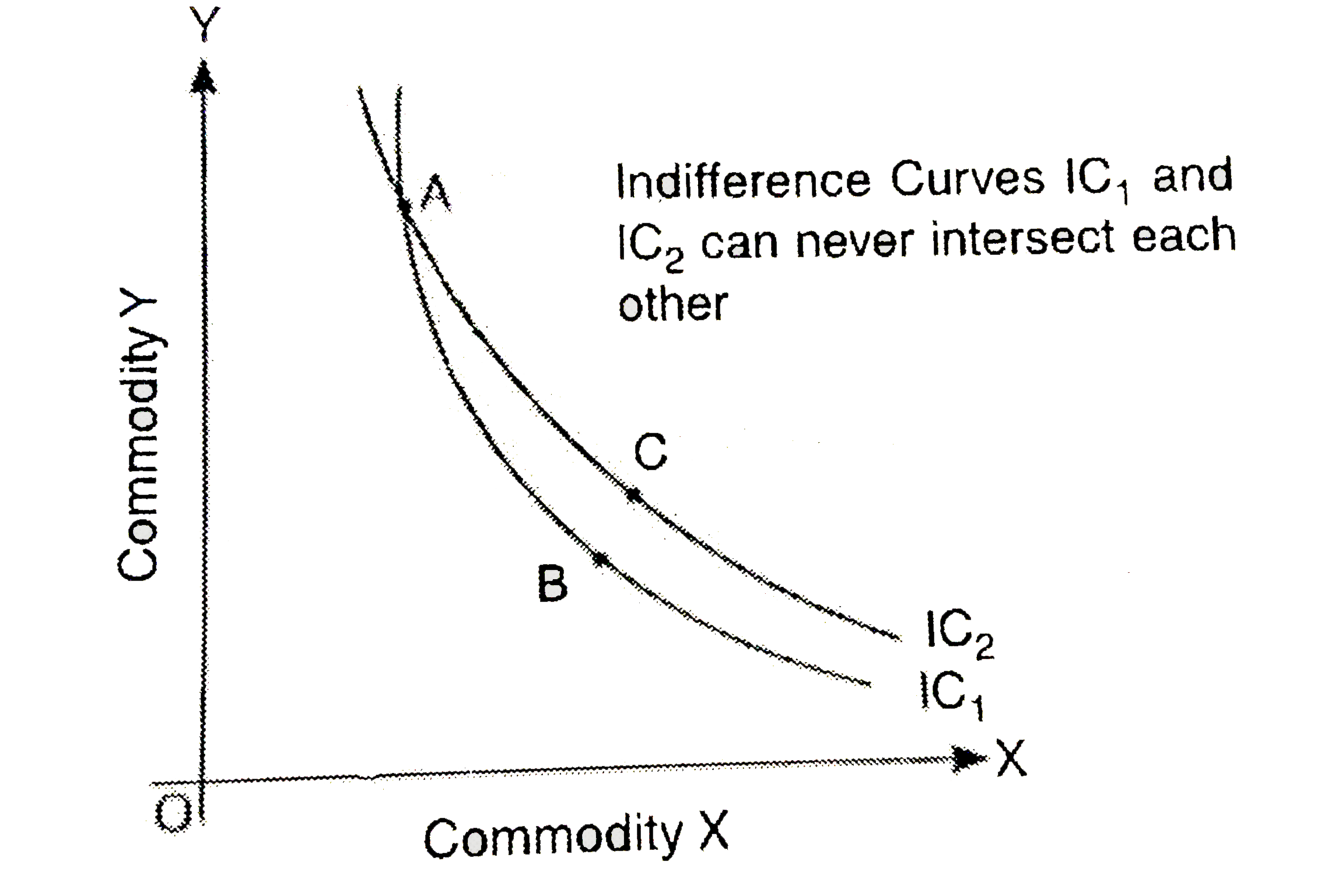(a) A consumer, Mr Aman is in state of equilibrium consuming two good X and Y, with given prices Px and Py. What will happen if MUx/Px>MUyPy?
(b) Identify which of the following is not true for the Indifference Curves theory. Give valid reasons for choice of you answer.
a. Lower indifference curve represents lower level of satisfaction.
b. Two indifference curves can intersect each other.
c. Indifference curve must be convex to origin at the point of tangency with the budge line at the consumer's equilibrium.
OR
A consumer has total money income of Rs 500 to be spent on two goods X and Y with prices of Rs 50 and Rs 10 per unit respectively. On the basis of the given information, answer the following question.
(a) Give the equation of the budget line for the consumer. ltrbgt (b) What is the value of slope of the budget line ?
(c) How many units can the consumer buy if he is to spend all his money income on good X?
(d) How does the budget line change if there is a 50% fall in price of good Y ?
(a) If MUx/Px>MUy/Py, then consumer is getting more marginal utility in case of good X as compared to Y. Therefore, he will buy more of X and less of Y. This will lead to fall in MUX and rise in MUY. The consumer will continue to buy more of X till MUx/Px becomes equal to MUy/Py.
(b) The second statement Two indifference curves can intersect each other is not true. As two indifference curves cannot represent the same level of satisfaction, they cannot intersect each other.
It means, only one indifference curve will pass through a given point on an indifference map. In the following diagram, satisfaction from point A and from B on IC1 will be the same. Similarly, point A and C on IC2 also give the same level of satisfaction. It means, point B and C should also give the same level of satisfaction. However, this is not possible, as B and C lie on two different indifference curves, IC1 and IC2 respectively and represent different levels of satisfaction. Therefore, two indifference curves cannot intersect each other.

(a) PxQx+PyQy=M
50Qx+10Qy=500
(b) Slope of Budget Line =(−)Px/Py=(−)50/10=(−)5
(c) If Qy= Zero, then
50Qx+10Qy=500
50Qx+10(0)=500
Qx=500/50=10 units
(d) Old Py=10
New Py=5
(50% of Rs 10 = Rs 5)
If Py falls, the consumer will be able to buy more of good Y in the same money income. It will push the Y-intercept of the Budget Line away from origin, keeping the X-intercept constant, i.e., it will rotate outwards. The equation will be 50Qx+5Qy=500
Topper's Solved these Questions
- BOOK - SANDEEP GARGCHAPTER - DEMAND AND ITS DETERMINANTSEXERCISE - Model test paper 212videos
DEMAND AND ITS DETERMINANTS
- BOOK - SANDEEP GARGCHAPTER - DEMANDEXERCISE - Unsolved particles4videos
DEMAND
- BOOK - SANDEEP GARGCHAPTER - ELASTICITY OF DEMANDEXERCISE - Unsolved practicals79videos
ELASTICITY OF DEMAND
Similar Questions
Knowledge Check
- Question 1 - Select One or More
Identify which of the following is not true for the Indifference Curves theory. Give valid reasons for choice of your answer.
ALower indifference curve represents lower level of satisfaction.BTwo indifference curves can intersect each other.CIndifference curve must be convex to origin at the point of tangency with the budget line at the consumer's equilibrium.DIndifference curves are drawn under the ordinal approach to consumer equilibrium. - Question 2 - Select One
An indifference curve is
Aconvex to the originBconcave to the originCa straight line curveDnone of these - Question 3 - Select One
Indifference curves are :
AConcace to the origin.BConvex to the originCUpwards sloping straight line passing from the originDNone of these
Identify which of the following is not true for the Indifference Curves. Give valid reasons for choice of your answer.
(a) Lower indifference curve represents lower level of satisfaction
(b) Two regular convex to origin indifference curves can intersect each other.
(c) Indifference curve must be convex to origin at the point of tangency with the budget line at the consumer's equilibrium. ltbr> (d) Indifference curves are drawn under the ordinal approach to consumer equilibriumView SolutionA consumer, Mr Aman is in state of equilibrium consuming two goods X and Y , with given prices PX and PY.(a) What will happen if MUXPX>MUYPY ? (b)What will happen if PY falls.
View SolutionDefine slope of indifference curve.
View SolutionWhich Indifference Curve represents the highest level of satisfaction ?
 View Solution
View SolutionAn indifference curve always:
View Solution

